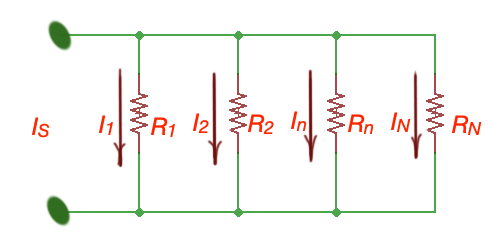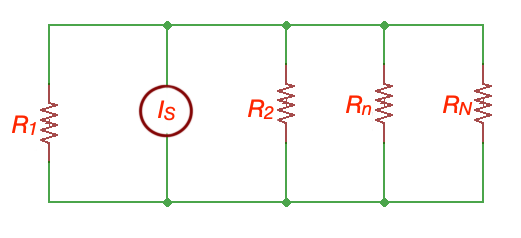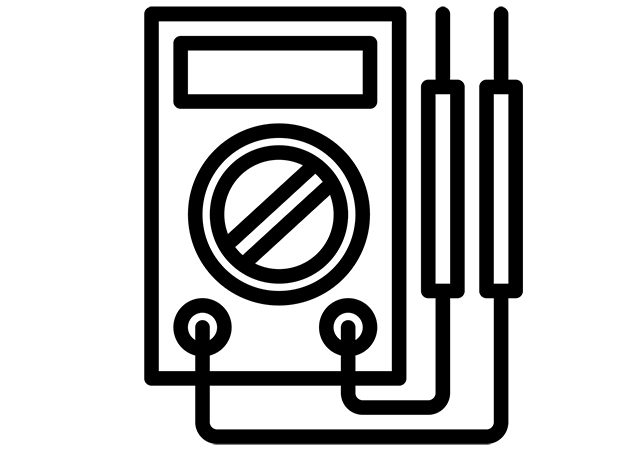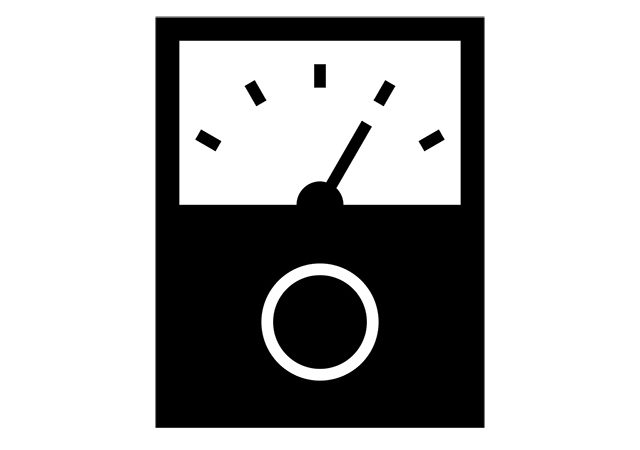Two or more resistors are said to be in parallel, if identical voltage is across all the resistors.
In accordance to Kirhhoff’s Law the current , and .
Here . So .
Here parallel resistors can be replaced by the equivalent resistance , and .
Then current through a resistor in parallel circuit is . This equation is called current divider. Current divider is a linear circuit, producing output current equal to a fraction of the input current.
For example, if Ohm, Ohm, Ohm, Ohm and A, then A.






